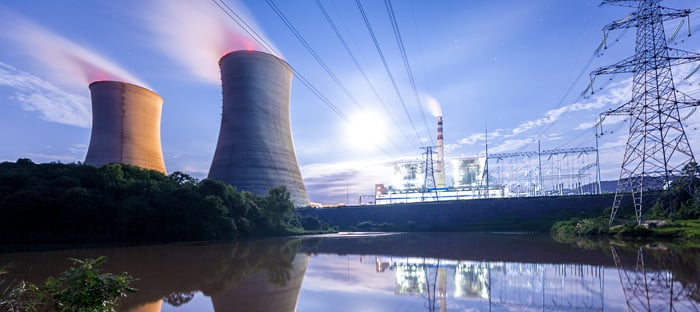The reason why the saying “You get what you pay for” endures is because of its simple truth and assorted application. Pair it with “If it looks too good to be true, it usually is,” and you’ve built a solid economic philosophy.
There’s a flip side to that philosophy, however. Expensive rarely equals best. Or, as Warren Buffet famously said, “Never buy retail.” In short, whether it’s for a new car or a new energy plan, when you’re shopping, choose the best product at the right price.
Searching for the cheapest electricity
Like other industries, electricity and natural gas companies in Energy Choice states are competing for your business. Those “cheapest electricity rates” could cost you more in the long run or come from a carbon emissions producing source.
To attract your attention, many will promise to show you how to get cheap electricity – then pitch you on a different product, possibly. Or they will give you a cheap variable rate to begin with, only to raise the price not long after.
Instead of looking for “cheap rates,” adopt a “best rate” mindset. Consider different factors beyond price. How does this rate affect my budget? Will my rate change month to month? Is my energy choice harming or helping the planet?
Here’s how to weigh the facts as you shop for your rate so you’ll get the lowest plan that doesn’t look or feel cheap
Energy Choice explained
Since the late 1970s, a handful of states have adopted Energy Choice, allowing customers to easily shop for and compare energy suppliers. With the power to choose their natural gas or electricity plan, households can select a rate that works best for their individual needs. Those same households also benefit from a competitive market, offering low rates and varied energy plans.
We’re proud to power and serve the following communities:
For those living in Energy Choice states “choice” is often the true differentiator, not “cheap.” Many people pick their energy supplier based on the type of energy they supply rather than rate cost. For climate conscious buyers, a carbon-free or renewable energy plan outweighs a cheap rate.
How do you determine what the best – and lowest – energy rate is for you? Here are a few fundamentals to get you started
1. Review your personal energy consumption
Before comparing energy rates and suppliers, consider your habits. Do you use energy efficient appliances and products, such as LED bulbs or power strips? Do you run appliances that gobble up energy at peak hours or overnight? Is the air
conditioning always on or do you use a smart thermostat to maximize efficiencies?You have far more power over your energy usage than just your rate. Asking these questions and finding energy efficient answers could help lower your electric bill without making a switch. Before you change your plan, try changing your energy habits. Then combine that with a smart plan to find the perfect rate
2. Follow energy pricing trends
Sometimes finding a great plan at a low rate is the right time to think “cheap” – as in, when is electricity cheapest to produce for the people who generate it?
The U.S. Energy Information Administration forecasts residential electricity prices will increase about 6.1% in 2022 to make average electricity rates 14.4 cents per kilowatt hour (kWh). This spike is larger than normal due to short-term trends. Long- term electricity pricing largely follows inflation.
Trends other than inflation can affect energy plans, including seasonality and supply. This is important for people who choose a variable-rate energy plan. Seasonality and supply chain issues can turn that cheap variable rate into an expensive one in the blink of an eye.
3. Pick the right plan: fixed, variable and time-of-use rates
If you want to protect your rate against volatility in the market and other factors outside your control, consider choosing a fixed-rate energy plan. Fixed-rate plans lock in a rate so that the supply portion of your energy bill remains the same throughout the plan contract.
Variable-rate plans often offer lower initial monthly rates, but the plan’s expense can shift monthly based on changes in the energy market. If you follow market prices closely, can manage the math to ensure you are getting the best deal, and like the option of frequently switching energy suppliers, this plan might work well for you.
Another option is a time-of-use plan. Consumers who choose this energy plan are charged a different kilowatt-per-hour rate based on when they use energy during a 24-hour period, or time-of-use rates. For example, it will cost a consumer who runs his dishwasher during daytime peak hours more than a consumer who runs her dishwasher late at night.
4. Short- or long-term plan?
Whatever plan you choose, you’ll agree to keep that plan for a certain length of time. In a volatile energy market, a short-term plan will allow you to change your plan quickly, reacting almost in real-time to the changing market. If you enjoy that flexibility, a short-term contract might be for you. Note, however, that a short-term plan won’t offer the lowest rate because of that same flexibility.
If you choose a long-term plan, you’re locking yourself into the same energy rate for 18 months or more, on average. But that can work to your advantage. Over the length of the contract, market fluctuation and inflation will have no effect on what you pay for your energy supply. While variable rates go up and up, your rate stays flat and low.
5. Helping curb climate change
Another way to assess whether a “cheap” rate is the “best” rate is to find out how your energy is generated. If, like millions of Americans, you make certain buying decisions based on an organization’s sustainability efforts, knowing whether your energy comes from a renewable or clean energy source may be more important than the rate. The cost of renewable energy, like wind and solar power, has dropped below fossil fuel prices in recent years. However, these sources aren’t as reliable as other clean energy options like nuclear power, due to geographical and time of day restrictions. Clean energy refers to energy produced with little to no greenhouse gas emissions. This includes low-carbon and carbon-free energy sources such as nuclear.
Nuclear energy is the largest non-fossil fuel electricity generation source in the United States. Nuclear power plants produced 790 billion kilowatt hours of electricity in 2020. Commercial nuclear power plants have supplied around 20% of the nation’s electricity each year since 1990. In 2020, nuclear generation supplied nearly 52% of all clean energy in the US – more than all other sources of clean energy combined.
Remember, ‘choice’ is always better than ‘cheap’
Remember, when comparing energy rates, “choice” will always outweigh “cheap.” The variables that make up any energy plan – cost per kilowatt hour, fixed or variable rate, short- or long-term contract, carbon-intensive or carbon-free energy – are always more important.
At Energy Harbor, we want you to find the best rate possible for your needs. And we’re happy to help you find it. Ready to compare?
Compare Residential Plans
Enter your zipcode to find 100% Green plans in your area.








